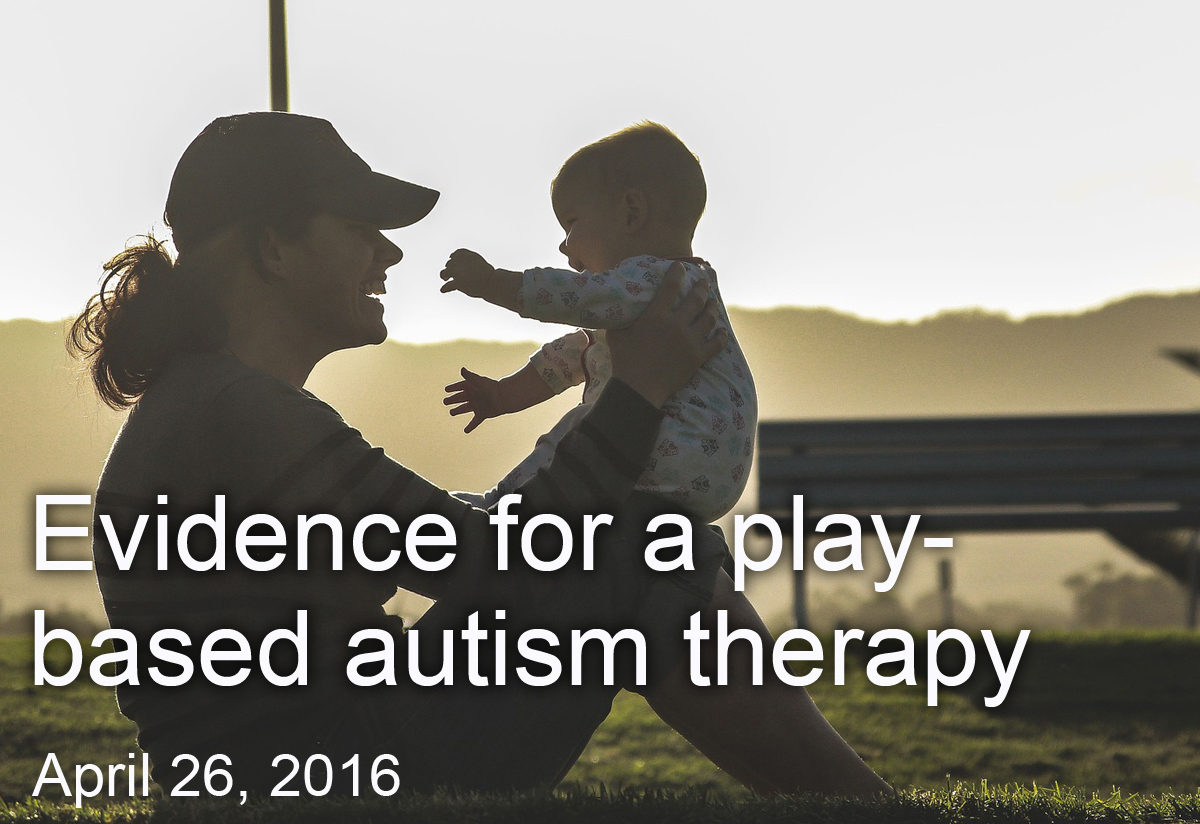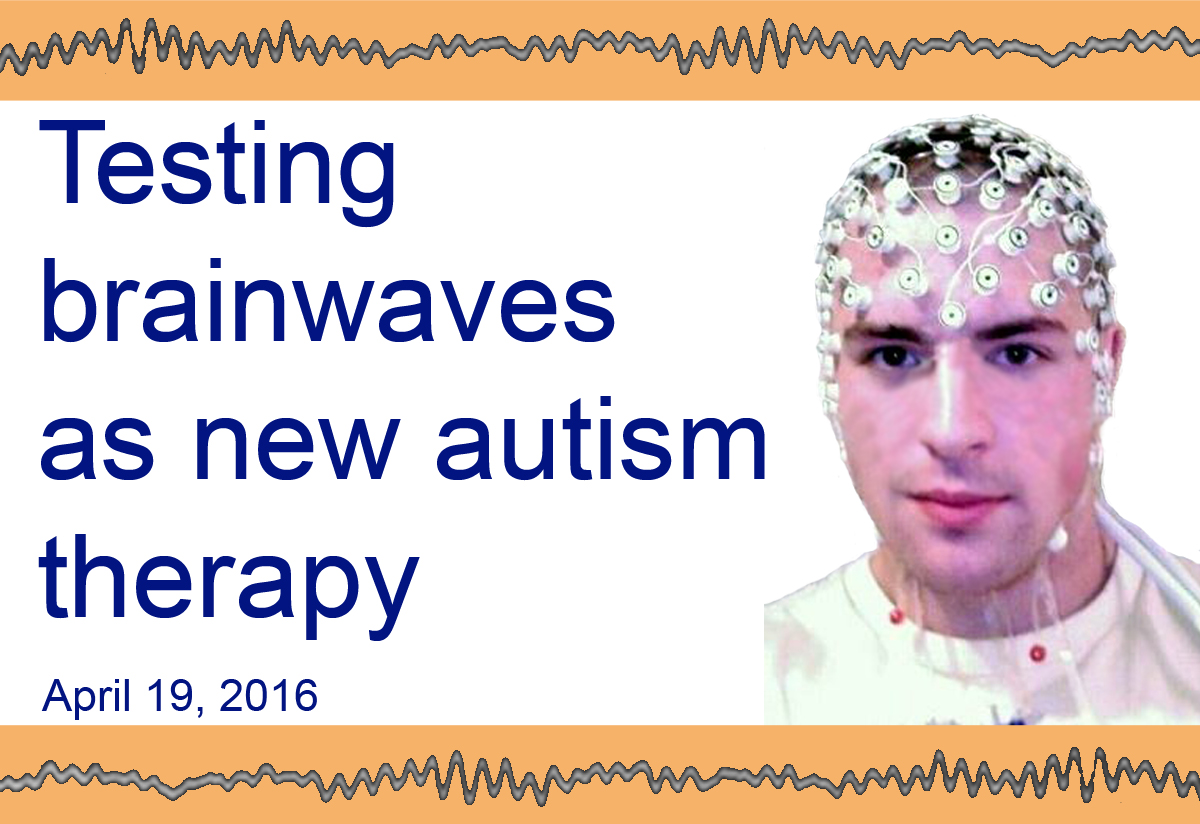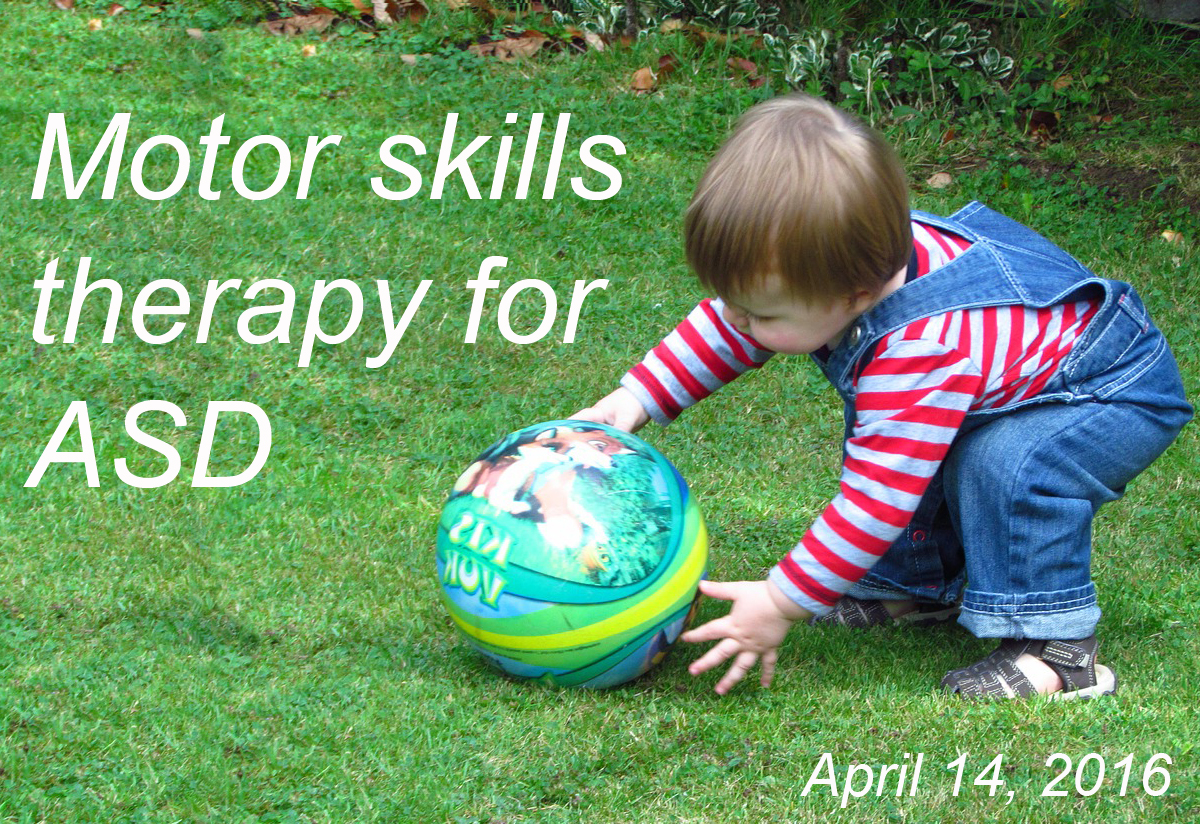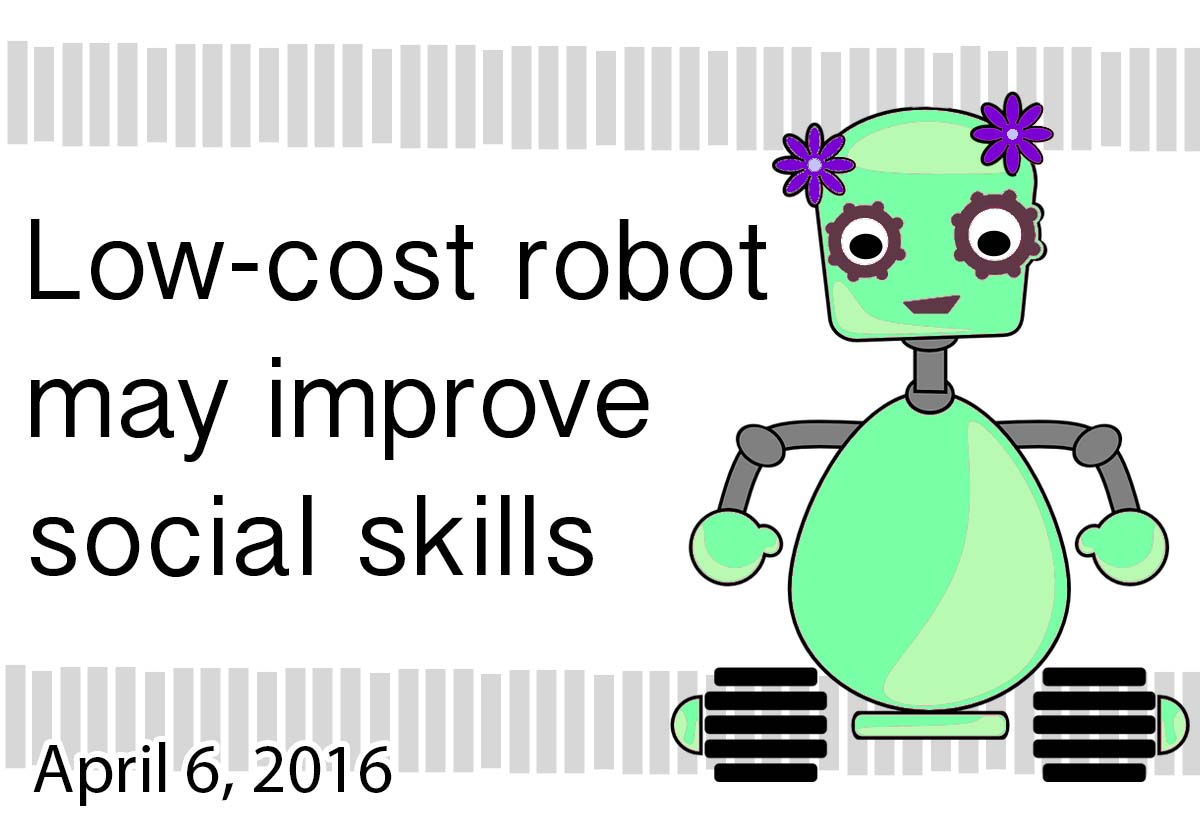Archives
April, 2016
Select a different month in the archive
Responsive Play as a Therapy for Autism
By Shana R. Spindler, PhD on April 26, 2016

Background: Play is critical for the social and emotional growth of children. In a type of interaction called responsive play, parents follow the lead of the child, reacting to the child’s interests and movements rather than guiding the direction of activity. Several studies have found that responsive play may improve the social engagement between children with autism and their caretakers.
What’s new: In the May 2016 issue of the Journal of Autism and Developmental Disorders, researchers published a study testing the effectiveness of a responsive therapy called JASPER, which stands for Joint Attention, Symbolic Play, Engagement, and Regulation. In the study, 85 children with autism and their parents were randomly assigned to participate in JASPER or a parent-only, discussion based training session. Each program consisted of weekly one-hour training sessions for ten weeks.
At a six month follow-up visit, compared to parents who received parent-only education, the parents from the JASPER group had increased responsive behaviors to their children, and their children spent more time jointly engaged.
Why it’s important: This study links increases in a child’s social engagement to improvements in a parent’s responsive behavior following JASPER therapy. Previous studies of JASPER focused only on the improvements in the child’s engagement.
Help me understand :
| Source(s) : |
| Tweet |
Non-invasive Brain Monitoring, a Potential ASD Therapy
By Chelsea E. Toledo, M.A. on April 19, 2016

Background: Among the treatments being considered for autism spectrum disorder (ASD), neurofeedback shows an indication of brain activity in real time, which helps people learn to regulate how their brains are functioning. The most common form of neurofeedback is analyzed using electroencephalography (EEG), which involves placement of electrodes on the scalp to measure changes in electrical activity within the brain. This process is frequently used to diagnose epilepsy.
What’s new: On January 14, 2016, the journal, Frontiers in Human Neuroscience published a study exploring EEG’s potential as a treatment for ASD, with a focus on the relationship between different frequency bands generated as a result of recording specific waveform oscillations in the brain’s activity. Researchers used the technology to monitor the brain activity of 18 participants with high-functioning ASD. After 18 weekly EEG sessions, they found a reduction in EEG characteristics associated with ASD in the brain’s prefrontal cortex – specifically those related to focused attention. They also saw improvement in lethargy and social withdrawal, as measured in an established questionnaire that was administered to parents at the beginning and end of the study.
Why it’s important: This study suggests that using neurofeedback from EEG analysis is a potential therapy for high-functioning children with ASD. Future research could hone in on specific techniques that compare relationships between frequency bands for the most effective method of treatment.
Help me understand :
| Source(s) : |
| Tweet |
Robots and Rhythm May Help Motor Difficulties in Autism
By Shana R. Spindler, PhD on April 14, 2016

Background: Over 50 percent of children with autism have problems with gross and fine motor activities. Motor skills are often associated with playing sports or learning how to write, but they’re also important for imitation and synchronized movements. This social aspect of motor development is an important focus for autism research.
What’s new: On December 17, 2015, the journal Autism Research and Treatment published a study comparing motor performance following several therapies for autism. The researchers divided 36 children with Autism Spectrum Disorder into three groups—rhythm, robotic, and standard-of-care.
Each group received training for eight weeks, consisting of four sessions per week. The rhythm and robotic groups participated in social, whole-body movement games. In contrast, the standard-of-care group focused on tabletop activities that promoted fine motor skills, social communication, and academics.
The researchers found that children in the rhythm and robotic groups showed greater improvement on body coordination and movement synchrony, while the standard-of-care group improved their fine motor control.
Why it’s important: This is the first study to look at the effects of robotic and rhythm training compared to standard-of-care activities on social aspects of motor development using rigorous scientific methods. The results suggest that a combination of therapy is important for improving the range of motor skills needed for full functioning.
Help me understand :
| Source(s) : |
| Tweet |
Therapy with Robots May Help Social Skills in ASD
By Chelsea E. Toledo, M.A. on April 6, 2016

Background: Autism spectrum disorder (ASD) is characterized by differences in socialization, communication, and behavior. Novel approaches, such as robot-based interaction programs, are emerging as cutting-edge technologies for autism therapy.
What’s New: A recent issue of Autonomous Robot featured a study exploring whether incorporating robots into existing ASD therapies could further improve performance on assessments. The researchers administered speech therapy over a period of six weeks to 11 children between the ages of three and six with both ASD and language delay. Eight of those children also received interventions twice a week for 30 minutes each session with a robot invented by the researchers called Child Centered Adaptive Robot for Learning Environments, or CHARLIE, which could imitate the children’s movements and engage in games. They found that the group who interacted with CHARLIE showed greater improvement in receptive language, play and leisure scores on a commonly used assessment at the end of the study.
Why it’s important: This study suggests that interactions with robots may improve interactions with other people in children with ASD. Future research could further explore that possibility with a larger sample of children representing different ages and ASD severity.
Help me understand :
| Source(s) : |
| Tweet |

